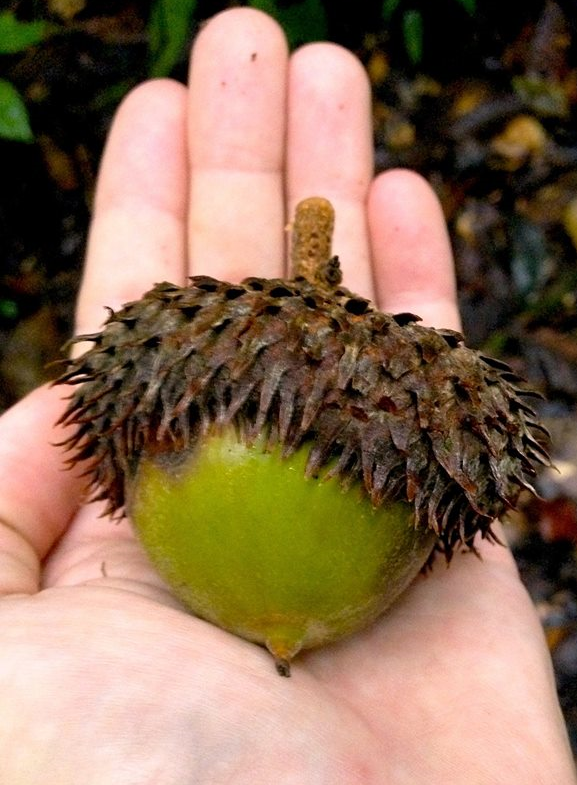Gary Cobb licensed under CC BY-ND 2.0
I find it fun to watch squirrels frantically scurrying about during the months of fall. Their usually playful demeanor seems to have been replaced with more serious and directed undertones. If you watch squirrels close enough you may quickly realize that, when it comes to oaks, squirrels seem to have a knack for taxonomy. They quickly bury red oak acorns while immediately set to work on eating white oak acorns. Why is this?
If you have ever tried to eat a raw acorn then you may know the reason. They are packed full of bitter tannins that quickly dry up your mouth and leave an awful after taste. Tannins are secondary chemicals that plants manufacture for protection. Tannins bind to proteins and keep them from being easily digested. This is how leather is made. When you tan a hide you are literally dousing it with tannins that bind to the proteins and keep them from rotting.
Back to the squirrels. The reason they seem to be choosy about how they deal with acorns all comes down to tannins. They bury red oak acorns because acorns in the red oak group have the highest levels of tannins. This is because red oak acorns do not germinate until spring. They have high levels of tannins to fight off fungi and other pathogens over the long, dreary winter. Thus, red oak acorns store better. White oaks germinate in the fall, using a long taproot to pull them into the soil. Because of this, white oaks don't have to dump as much tannin into their acorns. The squirrels seem to know this and simply bite out the white oak embryo before it can germinate. White oak acorns get eaten much sooner than reds because they simply do not keep as long.
There is also evidence that oaks and squirrels have struck a balance. Oaks do rely on squirrels as well as birds like jays to disperse their seeds. These critters can't remember where they cached all of their seeds so some are bound to germinate. What some researchers have found is that oaks place more tannins near the embryos in the acorn than they do at the tips. Why is this? As it turns out, acorns that have had their tips bit off can still germinate as long as their embryo remains unharmed. It is believed that this satisfies squirrels and jays enough to keep them from downing the entire acorn every time. Knowledge such as this puts a whole new spin on backyard ecology.
Photo Credit: Gary Cobb licensed under CC BY-ND 2.0.
Further Reading: [1]

